Your cart is currently empty!
Month: July 2024
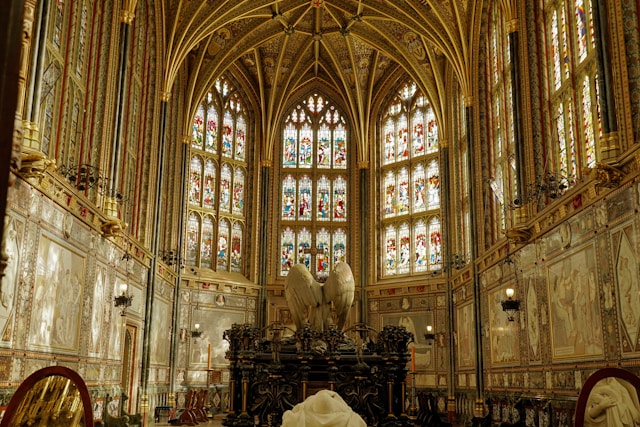
Elevate Church: A Comprehensive Guide to the Phenomenon
Introduction
Elevate Church is an influential multi-site megachurch with a global reach. Led by Pastors Steven and Holly Furtick, this vibrant community embodies a modern, seeker-sensitive approach to faith. In this comprehensive guide, we will explore the key aspects of Elevate Church, its impact on the Christian landscape, and its practical teachings and resources.
Origins and Mission
Founded in Charlotte, North Carolina in 2006, Elevate Church quickly gained prominence for its innovative worship services and dynamic preaching. The church’s mission is to “elevate lives to reach their God-given potential.” This mission is reflected in its focus on personal transformation, community engagement, and global outreach.
Distinctive Features
- Modern Worship: Elevate’s worship services feature contemporary music, dynamic lighting, and multimedia presentations, creating an immersive and engaging experience.
- Purpose-Driven Preaching: Pastors Steven and Holly Furtick are known for their practical and inspiring sermons that focus on applying biblical principles to daily life.
- Growth-Oriented Culture: The church emphasizes personal growth and transformation, offering various discipleship programs, small groups, and online resources.
- Global Impact: Elevate Church has established a network of campuses in the United States and around the world, reaching millions of people with its message.
Impact and Influence
Elevate Church has had a significant impact on the Christian community and beyond. Its innovative approach to faith has resonated with seekers and believers alike, drawing a large and diverse congregation.
Key Contributions
- Revitalizing Traditional Worship: Elevate’s modern worship style has inspired other churches to adopt more contemporary and engaging worship practices.
- Cultivating a Purposeful Faith: The church’s focus on purpose and personal transformation has encouraged Christians to seek a deeper relationship with God.
- Bridging the Gap: Elevate Church has successfully bridged the gap between traditional and contemporary Christianity, attracting people from all walks of life.
- Global Outreach: The church’s global network has enabled it to reach underserved communities and plant churches in regions with limited access to Christian resources.
Teachings and Resources
Elevate Church offers a wide range of teachings and resources to support its congregation and the broader Christian community.
Practical Sermons
Pastors Steven and Holly Furtick’s sermons are known for their practical application, providing listeners with biblical principles they can apply to their daily lives. Topics include:
- Relationships
- Personal growth
- Financial stewardship
- Living a purpose-filled life
Small Groups and Discipleship
Elevate Church encourages members to connect with others through small groups and discipleship programs. These gatherings provide a supportive environment for spiritual growth, prayer, and accountability.
Online Resources
Elevate Church offers a wealth of online resources, including:
- Sermons and Bible studies
- Devotionals
- Articles and podcasts
- Online courses
These resources help members stay connected, grow in their faith, and engage with the church community from anywhere in the world.
Conclusion
Elevate Church is a dynamic and influential force in the Christian community. Its modern approach to faith, practical teachings, and global reach have made it a beacon of hope and transformation for millions of people. As Elevate Church continues to grow and adapt, its impact on the Christian landscape and beyond will undoubtedly continue to be significant.
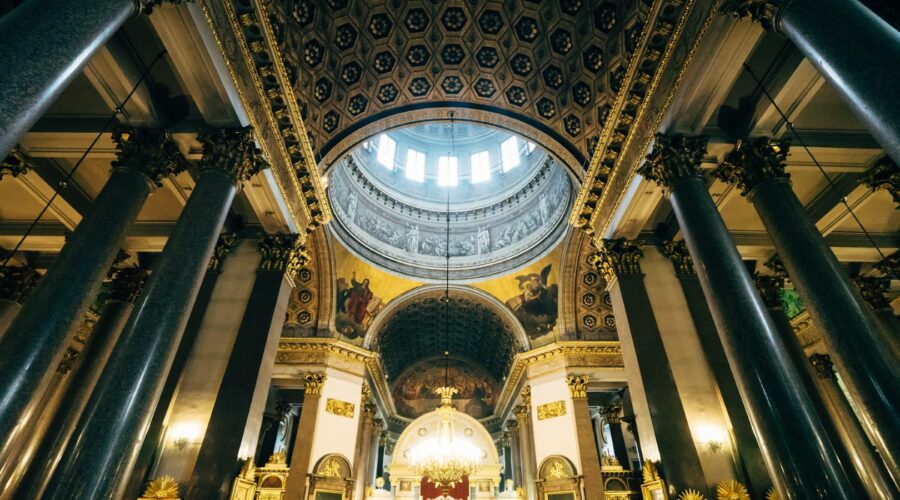
Discover the Metropolitan Community Church: A Welcoming Embrace for the LGBTQ+ Community
Introduction
The Metropolitan Community Church (MCC) is a global network of churches that have been at the forefront of LGBTQ+ advocacy and inclusivity since its inception in 1968. With a mission of radical inclusivity and unconditional love, MCCs have provided a safe and affirming space for individuals of all sexual orientations and gender identities to find community, support, and spiritual growth.
History and Origins
Founded by Reverend Troy Perry in Los Angeles, California, the MCC emerged as a response to the alienation and discrimination experienced by LGBTQ+ individuals within the traditional church. Perry, himself a gay man, sought to create a space where people could openly express their faith and sexuality without fear of judgment or exclusion.
Core Values and Beliefs
At the heart of the MCC’s mission lie its core values:
- Radical Inclusivity: MCCs welcome and affirm all people, regardless of their sexual orientation, gender identity, race, ethnicity, age, or socioeconomic status.
- Unconditional Love: MCCs believe that every person deserves to be loved and accepted unconditionally, especially those marginalized by society.
- Spiritual Empowerment: MCCs prioritize fostering a sense of spiritual growth and connection for all members, empowering them to live authentic and fulfilling lives.
Community and Worship
MCCs are vibrant communities that offer a wide range of programs and activities for members. These include:
- Weekly worship services that uplift and empower LGBTQ+ individuals
- Small groups such as Bible studies and support groups
- Social events and outings that foster a sense of connection and belonging
- Activism and advocacy efforts that promote LGBTQ+ equality and justice
Global Network
The MCC is a global network with churches in over 20 countries around the world. This network provides a sense of unity and support for LGBTQ+ individuals across borders, fostering a sense of belonging to a global community.
Challenges and Controversies
Despite its commitment to inclusivity, the MCC has faced challenges and controversies over the years:
Schisms and Divergence
The MCC has experienced several schisms and divergence over time, leading to the creation of breakaway denominations and organizations. These divisions have sometimes been rooted in differing interpretations of the MCC’s mission and beliefs.
Persecution and Discrimination
MCCs have faced persecution and discrimination from both within the wider church and society at large. This has included physical violence, vandalism, and efforts to deny MCCs recognition or legal protections.
Conclusion
The Metropolitan Community Church has played a vital role in the LGBTQ+ rights movement, providing a sanctuary and a voice for individuals marginalized by traditional religious institutions. With its unwavering commitment to radical inclusivity, unconditional love, and spiritual empowerment, the MCC continues to be a beacon of hope and support for the LGBTQ+ community worldwide.
Additional Resources
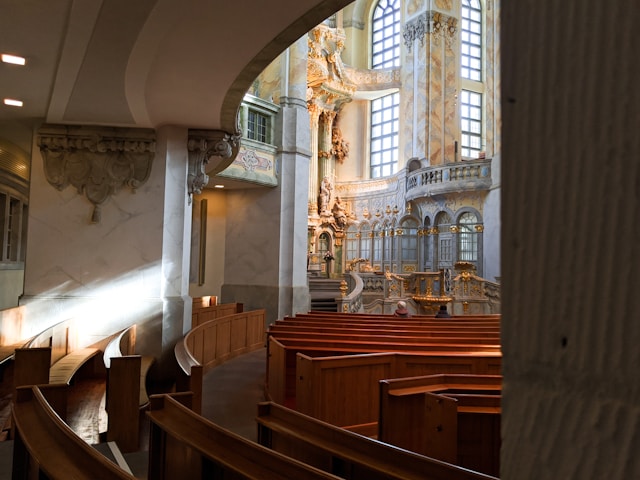
Salvation Ministries Live: A Comprehensive Guide
About Salvation Ministries Live
Salvation Ministries Live is a Christian television network based in Port Harcourt, Nigeria. It is owned and operated by Salvation Ministries, a Pentecostal church founded by Pastor David Ibiyeomie. The network broadcasts live services, sermons, and other religious programs 24 hours a day.
Salvation Ministries Live has a global reach, with viewers in over 100 countries. The network’s mission is to spread the gospel of Jesus Christ and to provide spiritual guidance and encouragement to believers around the world.
What to Expect
If you tune into Salvation Ministries Live, you can expect to see a variety of programs, including:
- Live services
- Sermons
- Bible studies
- Prayer meetings
- Gospel music
- Testimonies
- Interviews
- Documentaries
The network’s programming is designed to appeal to a wide range of viewers, from new believers to seasoned Christians. There is something for everyone at Salvation Ministries Live.
How to Watch
You can watch Salvation Ministries Live in several ways:
- On TV: The network is available on a variety of satellite and cable providers around the world.
- Online: You can watch Salvation Ministries Live online at https://www.smhos.org/live-tv/.
- Mobile: You can watch Salvation Ministries Live on your mobile device by downloading the network’s app from the App Store or Google Play.
Benefits of Watching
There are many benefits to watching Salvation Ministries Live. Some of the benefits include:
- You can be encouraged and inspired by the teachings of Pastor David Ibiyeomie.
- You can grow in your faith by watching Bible studies and sermons.
- You can be prayed for and receive spiritual guidance.
- You can connect with other Christians from around the world.
- You can be entertained by gospel music and testimonies.
Conclusion
Salvation Ministries Live is a valuable resource for Christians around the world. The network provides a variety of programs that can help you grow in your faith, be encouraged and inspired, and connect with other Christians. If you are looking for a way to deepen your relationship with God, I encourage you to watch Salvation Ministries Live.
Frequently Asked Questions
Here are some frequently asked questions about Salvation Ministries Live:
What time is the live service?
The live service is on every Sunday at 9:00 AM (WAT).
How can I contact Salvation Ministries Live?
You can contact Salvation Ministries Live by email at [email protected] or by phone at +234 84 700 700.
Is Salvation Ministries Live available in my country?
Salvation Ministries Live is available in over 100 countries around the world. You can check the network’s website to see if it is available in your country.
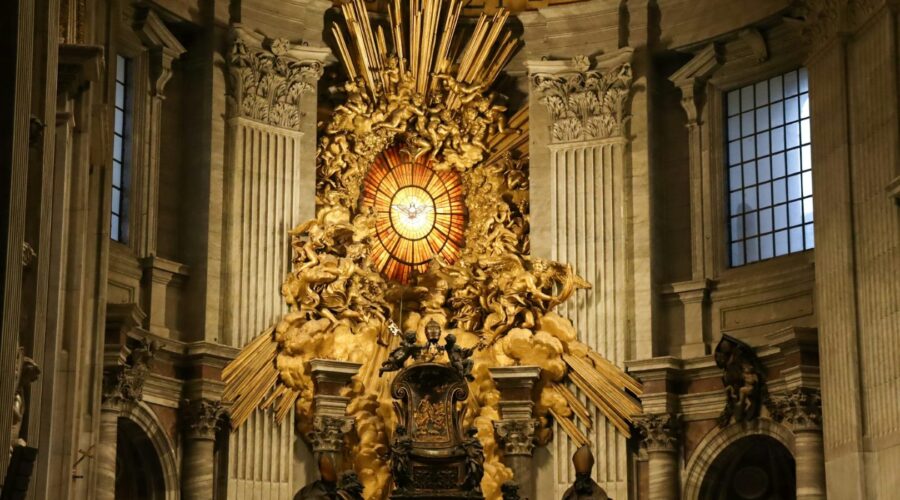
Understanding Covenant Church: A Comprehensive Guide
Introduction
A Covenant Church is a Protestant Christian denomination that emphasizes the importance of covenant theology, which emphasizes the importance of God’s covenant with his people. Covenant churches believe that God has entered into a covenant with his people, and that this covenant is a binding agreement that outlines the terms of their relationship. The covenant is based on God’s promise to be their God and their promise to be his people, and it is symbolized by the sacrament of baptism. Covenant churches believe that the covenant is a lifelong commitment, and that it is not something that can be broken.
History and Beliefs
Covenant theology developed in the 16th century as a response to the rise of Arminianism, which emphasized the importance of human free will in salvation. Covenant theologians argued that salvation was not based on human choice, but on God’s sovereign election. They also believed that the covenant was not a temporary agreement, but a permanent bond between God and his people. Covenant theology has been a major influence on the development of Reformed theology, and it is still held by many Protestant churches today.
Distinctive Characteristics
Covenant churches have several distinctive characteristics that set them apart from other Christian denominations. These include:
- Emphasis on covenant theology: Covenant churches believe that covenant theology is essential to understanding the relationship between God and his people.
- Lifelong commitment to the covenant: Covenant churches believe that the covenant is a lifelong commitment, and that it is not something that can be broken.
- Importance of the sacraments: Covenant churches believe that the sacraments of baptism and communion are essential to the Christian life.
- Emphasis on community: Covenant churches believe that the church is a community of believers who are bound together by the covenant.
Worship and Sacraments
Covenant churches typically have a formal worship service that includes elements such as prayer, scripture reading, preaching, and singing. The sacraments of baptism and communion are also an important part of worship. Baptism is seen as a sign of the covenant, and it is typically administered to infants and adults. Communion is seen as a way to remember the death and resurrection of Jesus Christ, and it is typically celebrated weekly or monthly.
Church Governance
Covenant churches are typically governed by a council of elders who are elected by the congregation. The elders are responsible for the spiritual leadership of the church, and they make decisions about the church’s worship, doctrine, and ministry. Covenant churches also typically have a pastor who is responsible for the day-to-day operations of the church.
Membership and Discipline
Membership in a covenant church is typically based on a profession of faith in Jesus Christ and a commitment to the covenant. Covenant churches also have a process for discipline that is used to deal with members who are not living in accordance with the covenant. Discipline is seen as a way to help members to repent and return to right fellowship with the church.
Benefits of Covenant Membership
There are many benefits to being a member of a covenant church. These include:
- Access to the sacraments: Covenant churches believe that the sacraments are essential to the Christian life, and members have access to these sacraments.
- Spiritual community: Covenant churches provide a sense of community for their members, and they offer opportunities for fellowship and support.
- Accountability: Covenant churches have a process for discipline that helps to keep members accountable for their actions.
- Pastoral care: Covenant churches provide pastoral care to their members, and they are available to help members through difficult times.
Conclusion
Covenant churches are a unique type of Christian denomination that emphasizes the importance of covenant theology. Covenant churches believe that God has entered into a covenant with his people, and that this covenant is a binding agreement that outlines the terms of their relationship. Covenant churches have a number of distinctive characteristics, including their emphasis on covenant theology, their lifelong commitment to the covenant, their importance of the sacraments, their emphasis on community, and their system of church governance. There are many benefits to being a member of a covenant church, including access to the sacraments, spiritual community, accountability, and pastoral care.
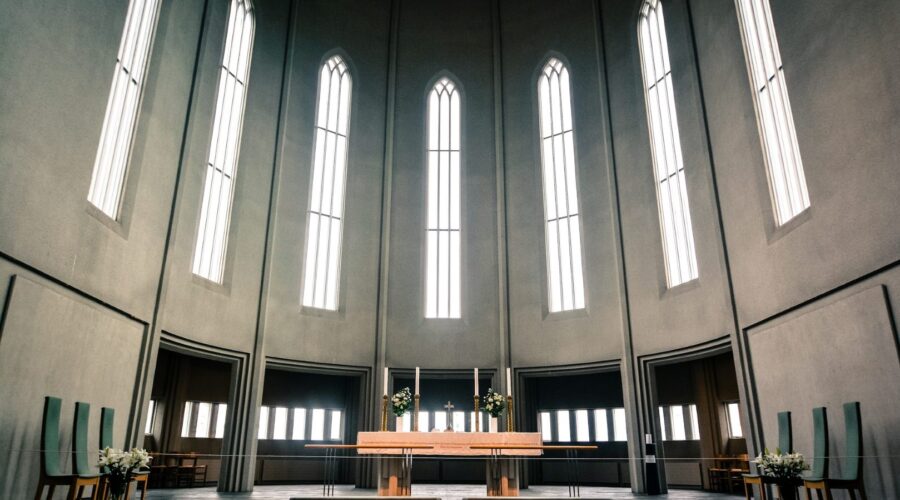
Power Up Your Meetings: A Comprehensive Guide to Prayer Before, During, and After Meetings
Introduction
Meetings are an integral part of professional and personal life. They provide a platform for collaboration, decision-making, and relationship-building. However, without proper preparation and spiritual guidance, meetings can often become unproductive and draining. This blog post offers a comprehensive guide to prayer for meeting, empowering you to harness its transformative power to enhance the effectiveness and spiritual impact of your meetings.
Benefits of Prayer Before Meetings
1. Sets the Right Atmosphere
Prayer creates a sacred space, inviting the Holy Spirit to guide and bless the meeting. It helps participants to quiet their minds, focus on the meeting purpose, and approach the discussion with a spirit of unity and openness.
2. Unites Participants
Prayer fosters a sense of shared purpose and belonging. By acknowledging our dependence on God and aligning our intentions, we create a foundation for mutual respect and collaboration.
3. Prepares Hearts and Minds
Prayer prepares participants to engage with the meeting content with receptivity and discernment. It helps us release biases, prejudices, and personal agendas, enabling us to approach the discussion with a clear perspective.
How to Pray Before Meetings
- Begin with a Grounding Exercise: Take a few minutes to quiet your mind and center yourself. Close your eyes, focus on your breath, and invite God’s presence into the space.
- Acknowledge God’s Sovereignty: Begin by acknowledging God’s authority over the meeting and your own limitations. Ask for His guidance, wisdom, and blessing.
- Set the Purpose: Clearly state the purpose of the meeting and ask for the Holy Spirit to align everyone’s hearts with that purpose.
- Pray for Participants: Pray for each participant by name, asking for their well-being, open hearts, and receptive minds. Intercede for unity, mutual respect, and a spirit of collaboration.
- Pray for Discernment and Wisdom: Ask for God’s guidance in discerning the best course of action, making wise decisions, and resolving conflicts in a way that honors Him.
Prayer During Meetings
1. Brief Moments of Reflection:
Throughout the meeting, take brief pauses for silent prayer. These moments allow you to reconnect with God, refocus on the purpose, and seek His guidance in the midst of discussions.
2. Prayer for Consensus:
When decisions need to be made, take a moment to pray for consensus and unity. Ask God to guide the discussion and help participants find a common ground that honors everyone’s perspectives.
3. Pray for Healing or Resolution:
If the meeting involves conflict or tension, pray for healing and resolution. Ask God to bring forgiveness, understanding, and a spirit of reconciliation to the situation.
Prayer After Meetings
- Express Gratitude: Begin by expressing gratitude to God for the opportunity to meet. Acknowledge the progress made and the insights gained.
- Reflect on the Meeting: Take some time to reflect on the meeting. Ask yourself what went well and what areas could be improved in future meetings. Seek God’s guidance in identifying areas for growth and development.
- Pray for Continued Blessings: Pray for the implementation of any decisions made during the meeting. Ask God to guide the next steps and bless the participants’ endeavors.
- Close in Prayer: Conclude the meeting with a prayer for God’s continued presence, guidance, and protection in the days ahead.
Conclusion
Prayer is an indispensable tool for enhancing the effectiveness, productivity, and spiritual impact of meetings. By incorporating prayer before, during, and after meetings, we invite God’s presence, seek His guidance, foster unity, and prepare our hearts and minds for productive and spiritually enriching encounters. Embrace the transformative power of prayer and experience the positive impact it can have on your meetings and beyond.

Delving into the Significance and History of Calvary
Introduction
Calvary, also known as Golgotha, is a renowned site in Jerusalem inextricably linked to the crucifixion of Jesus Christ. Its name, derived from the Latin word “calvaria,” meaning “skull,” stems from its topographical resemblance to a human skull. Throughout history, Calvary has been revered as a sacred location, attracting millions of pilgrims and visitors seeking spiritual enlightenment and connection with the Christian faith.
Historical Significance
Calvary first gained prominence during the Roman occupation of Jerusalem. It served as a place of public execution, where criminals were sentenced to death by crucifixion. However, it was the execution of Jesus Christ in approximately 30-33 AD that transformed Calvary into a significant religious landmark. According to the Christian Gospels, Jesus was crucified on a hill outside the city walls, believed to be Calvary.
The Significance of the Crucifixion
The crucifixion of Jesus Christ is central to Christian theology and has profound religious implications. Christians believe that through Jesus’ death and resurrection, humanity’s sins were atoned for, offering salvation and eternal life. Calvary became a symbol of redemption, hope, and the ultimate sacrifice made by Jesus for the sake of humankind.
Archaeological Evidence
Archaeological excavations conducted at the traditional site of Calvary have unearthed evidence supporting its historical significance. The Church of the Holy Sepulchre, constructed in the 4th century AD, stands atop what is believed to be the rock where Jesus’ cross was planted. Within the church, pilgrims can find the Stations of the Cross, a series of 14 stops depicting the final hours of Jesus’ life.
Pilgrimage and Devotion
Over the centuries, Calvary has become a major pilgrimage destination for Christians from around the world. Pilgrims flock to the site to pay homage to the location where Jesus was crucified and to experience its spiritual significance. For many, visiting Calvary is a profound and transformative experience, providing a deeper connection to their faith and a sense of shared history with fellow believers.
Calvary in Art and Literature
The importance of Calvary has been reflected in art and literature throughout history. Countless paintings, sculptures, and literary works have depicted the crucifixion of Jesus or the symbolism associated with Calvary. Some notable examples include:
– Michelangelo’s Pietà (1499): A marble sculpture depicting the Virgin Mary holding the dead body of Jesus after the crucifixion.
– Rembrandt’s The Raising of the Cross (1633): A painting capturing the moment before Jesus’ crucifixion, highlighting the physical and emotional anguish he endured.
– John Bunyan’s The Pilgrim’s Progress (1678): A novel that allegorically portrays a Christian’s journey to Heaven, with Calvary symbolizing a pivotal point of struggle and redemption.Theological Interpretation
Theologically, Calvary represents the ultimate expression of God’s love and grace. It serves as a reminder of the sacrifice that Jesus made for humanity and the hope and salvation that it offers. Through Calvary, believers are reminded of the power of redemption and the transformative nature of God’s love.
Conclusion
Calvary, a sacred site steeped in both historical and religious significance, has played a pivotal role in Christianity. Its association with the crucifixion of Jesus Christ has transformed it into a symbol of sacrifice, hope, and redemption. Archaeological evidence, pilgrimage, and artistic representations have all contributed to its enduring importance, making it a cherished destination for Christians seeking spiritual enlightenment and a connection to their faith.
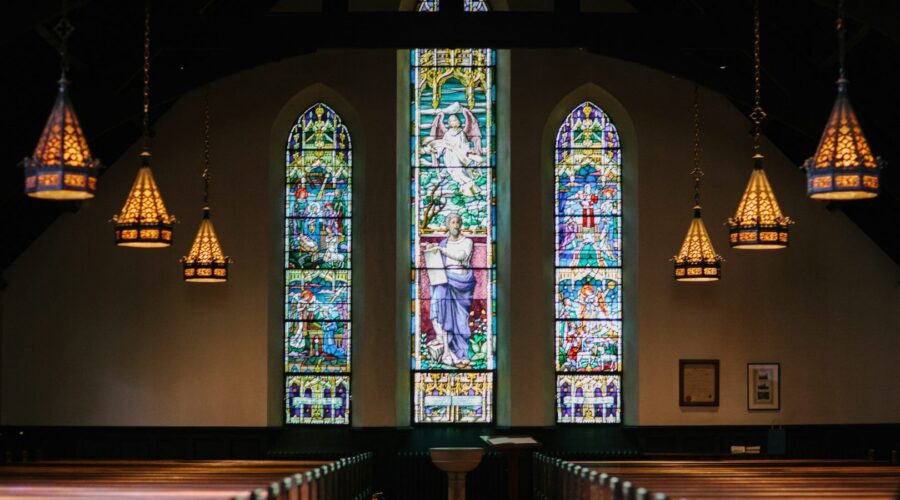
Discover the Joy of Fellowship: Find an SDA Church Near You
The Importance of Church Community
As social beings, we crave connections and a sense of belonging. Faith communities, such as Seventh-day Adventist (SDA) churches, provide a vibrant and supportive environment where individuals can grow spiritually, connect with like-minded believers, and contribute to the well-being of others.
Finding an SDA Church Near You
- Online Directories: Visit the official SDA website www.adventist.org/en or use church locators like Find a Church to search for SDA churches in your area.
- Local Listings: Check phone directories, local newspapers, or online business listings for churches in your vicinity.
- Word-of-Mouth: Reach out to friends, family, or acquaintances who are members of the SDA faith to inquire about nearby churches.
What to Expect at an SDA Church
- Worship Services: SDA churches hold regular worship services typically on Saturdays, the biblical Sabbath. These services feature music, prayer, Bible study, and a sermon.
- Sabbath School: Before worship services, Sabbath School classes provide opportunities for Bible study and discussion, nurturing spiritual growth and fellowship.
- Community Programs: Many SDA churches offer a wide range of community programs, such as youth groups, senior ministries, health screenings, and outreach initiatives.
How to Choose the Right SDA Church
- Location and Accessibility: Consider the church’s proximity to your home or workplace and its accessibility via public transportation or parking.
- Doctrine and Beliefs: Ensure that the church aligns with your biblical beliefs and core values.
- Congregational Culture: Visit the church to experience its atmosphere, meet the pastor and members, and assess if it’s a community you feel comfortable being a part of.
- Ministry Programs: Evaluate the church’s ministry programs and how they align with your spiritual needs and interests.
Benefits of Attending an SDA Church
- Spiritual Growth: Engage in Bible study, worship, and fellowship to deepen your faith and understanding of God’s word.
- Community Support: Build meaningful relationships with like-minded believers who provide encouragement, support, and accountability.
- Community Involvement: Participate in outreach initiatives, volunteer opportunities, and community events that make a positive impact on your surroundings.
- Personal Development: Discover opportunities for leadership, service, and spiritual growth through involvement in church programs.
Conclusion
Finding an SDA church near you can be a transformative experience that enriches your spiritual journey, fosters a sense of community, and empowers you to make a difference in the world. By following the tips outlined above, you can identify the right church for your needs and immerse yourself in a vibrant and supportive faith community.
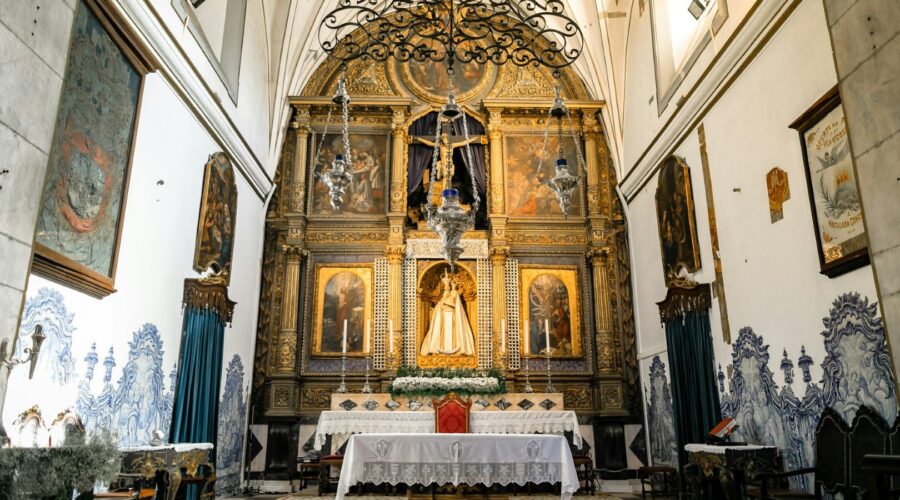
Discover the Rich Tapestry of Catholicism: A Comprehensive Guide
Introduction
In the realm of the world’s religions, Catholicism stands as an enduring and influential force, shaping the beliefs, practices, and histories of countless individuals and nations. This comprehensive guide delves into the multifaceted tapestry of Catholicism, exploring its beliefs, sacraments, history, and impact on society.
Core Beliefs
At the heart of Catholicism lie a set of fundamental beliefs:
- Monotheism: Belief in one God, the Trinity of Father, Son, and Holy Spirit.
- Incarnation: Belief that Jesus Christ, the Son of God, became human and lived among us.
- Resurrection: Belief that Jesus rose from the dead, conquering death and offering hope of eternal life.
- Salvation: Belief that humans are sinful and need God’s grace to be saved, which is accessible through faith in Jesus Christ.
- Sacraments: Belief in seven sacred rituals that are seen as channels of God’s grace.
The Virgin Mary
Catholicism also holds a special veneration for the Virgin Mary, believing that she was immaculately conceived, remained a perpetual virgin, and was assumed into heaven after her death.
Sacraments
Sacraments are central to Catholic worship and spirituality, believed to be visible signs of God’s grace and means of encountering the divine:
- Baptism: Sacrament of initiation into the Catholic Church, washing away original sin.
- Confirmation: Sacrament that strengthens the spiritual bond with God and confers the Holy Spirit’s gifts.
- Eucharist: Sacrament of bread and wine consecrated into the body and blood of Christ.
- Penance: Sacrament of reconciliation with God, through which sins are forgiven.
- Anointing of the Sick: Sacrament that provides spiritual and physical comfort to the ill.
- Holy Orders: Sacrament that consecrates men as priests, deacons, and bishops.
- Matrimony: Sacrament that blesses the union of a man and woman in holy matrimony.
History of Catholicism
The history of Catholicism spans over two millennia, marked by pivotal events and figures:
Early Christianity
Catholicism traces its roots to the apostles of Jesus Christ, who spread the Christian message throughout the Roman Empire.
Rise of the Papacy
The Bishop of Rome, known as the Pope, gradually emerged as the head of the Catholic Church, with authority over its doctrine and administration.
Great Schism
In 1054, the Eastern Orthodox Church split from the Catholic Church over doctrinal and political differences, creating a divide that persists to this day.
Reformation
The Protestant Reformation of the 16th century led to further divisions within Christianity, with the emergence of Lutheranism, Calvinism, and other Protestant denominations.
Vatican II
The Second Vatican Council (1962-1965) brought about significant reforms in the Catholic Church, modernizing its rituals, promoting ecumenism, and engaging with the wider world.
Role in Society
Catholicism has played a profound role in shaping societies around the globe:
Education
Catholic schools and universities have been at the forefront of education for centuries, fostering intellectual growth and moral development.
Healthcare
Catholic hospitals and clinics provide compassionate care to the sick and vulnerable, guided by the Church’s teachings on human dignity.
Social Justice
Catholic social teaching emphasizes the importance of justice, peace, and human rights, advocating for the marginalized and voiceless.
Art and Culture
Catholicism has inspired countless works of art, music, and literature, enriching the cultural heritage of civilizations.
Influence of Catholicism Today
In the 21st century, Catholicism continues to be a vibrant and influential force:
Global Reach
With over 1.3 billion adherents worldwide, Catholicism is the largest Christian denomination, spanning all continents.
Pope Francis
The current Pope, Francis, has emphasized the Church’s commitment to the poor, social justice, and interfaith dialogue.
Ecumenism
Catholicism is engaged in ongoing efforts to foster unity among Christian denominations and promote interreligious understanding.
Conclusion
Catholicism is a tapestry of beliefs, practices, history, and societal influence that has touched the lives of countless individuals throughout the centuries. Its enduring presence is a testament to the enduring power of faith, ritual, and the search for meaning in life.
This comprehensive guide provides a glimpse into the rich tapestry of Catholicism, inviting readers to explore its depths and discover the myriad ways it shapes our world.

Embark on a Spiritual Odyssey: Exploring the Valley of Vision
The Valley of Vision is a remarkable collection of Puritan prayers and devotional writings that has profoundly shaped the spiritual lives of countless Christians for centuries. Written by renowned pastors and theologians of the 17th and 18th centuries, these prayers offer a window into the vibrant and deeply personal faith of the Puritan era.
Origins and Significance
The Valley of Vision was first published in 1632 and underwent several revisions over the years. The final edition, published in 1724, contains over 1,000 prayers organized into various categories, such as prayers for personal growth, spiritual warfare, and times of distress.
The Valley of Vision is a testament to the Puritans’ deep commitment to prayer as a vital part of their Christian walk. They believed that prayer was the primary means by which they could commune with God, seek His guidance, and experience His transformative grace.
Key Themes
Throughout the Valley of Vision, certain themes emerge as central to the Puritan spiritual experience:
Trust in God’s Sovereignty
The Puritans had an unwavering trust in God’s sovereign control over all things. They believed that He ordains all events, both good and bad, for the ultimate good of His people.
Dependence on Divine Grace
The Puritans recognized their own sinfulness and helplessness apart from God’s grace. They constantly sought His favor, strength, and guidance in all aspects of their lives.
Repentance and Humility
The Puritans emphasized the importance of repentance and humility as essential to a right relationship with God. They believed that true repentance involved not only acknowledging their sins but also turning away from them and seeking God’s forgiveness.
Practical Application
The Valley of Vision is not merely a historical document but a practical resource for Christian living today. Its prayers provide:
- A model for prayer: The Valley of Vision offers a diverse collection of prayers that cover a wide range of needs and situations.
- Inspiration and encouragement: The heartfelt cries and expressions of faith in these prayers can inspire and encourage believers to deepen their own prayer life.
- Guidance and support: The prayers in the Valley of Vision provide guidance and support through times of trial, temptation, and doubt.
Favorite Prayers from the Valley of Vision
Prayer Author Description A Prayer for Divine Help John Flavel A heartfelt plea for God’s assistance in times of weakness and need. A Prayer for Humility Richard Alleine A request for a heart that is humble, teachable, and mindful of its own sinfulness. A Prayer for Forgiveness William Gurnall A profound confession of sin and a plea for God’s pardon and cleansing grace. Conclusion
The Valley of Vision is an invaluable treasure that offers a glimpse into the spiritual lives of our forefathers. Its prayers provide a powerful tool for personal devotion, guiding us in the pursuit of a deeper relationship with God. By exploring this spiritual odyssey, we can glean wisdom and encouragement for our own journey of faith.
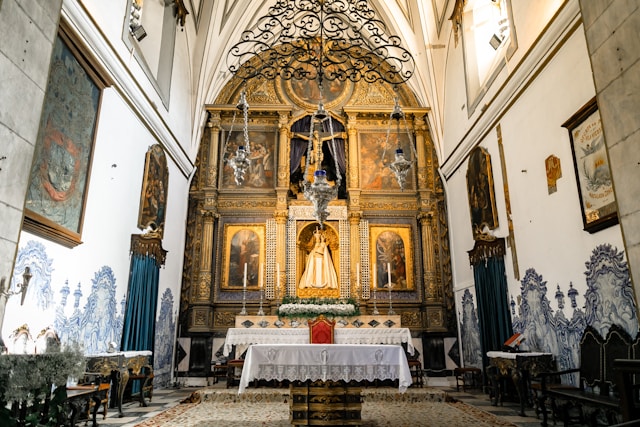
Unveiling the Mission Church: A Comprehensive Guide to Establishing Thriving Church Plants
Introduction
In the contemporary Christian landscape, church planting has emerged as a pivotal strategy for expanding the Kingdom of God. Mission churches, specifically designed to reach unreached communities, play a crucial role in this mission. This comprehensive guide delves into the intricacies of mission church planting, exploring key aspects, best practices, and proven strategies to empower emerging congregations.
Defining Mission Churches
Mission churches are distinct from traditional congregations in their primary focus on reaching non-believers who have little or no connection to the Christian faith. They are often planted in underserved or unreached areas, aiming to engage the community through evangelism, discipleship, and service.
Key Characteristics of Mission Churches:
- Intentional focus on evangelism and outreach
- Emphasis on building relationships within the community
- Leadership committed to equipping and empowering members
li>Adaptability to the unique needs of the target population
Phases of Mission Church Planting
Pre-Plant Phase:
This foundational stage involves prayer, research, and careful planning. It includes identifying the target community, building a team, and securing resources.
Launch Phase:
The initial launch of the mission church involves establishing regular worship services, engaging in community outreach, and developing discipleship programs.
Growth Phase:
As the church grows, it focuses on consolidating its foundation, strengthening leadership, and expanding its ministry programs to meet the increasing needs of the community.
Maturity Phase:
In this phase, the mission church becomes a self-sustaining and thriving congregation. It actively engages in church planting, sending out its own missionaries to reach new communities.
Essential Elements for Success
Biblical Leadership:
Strong and passionate leadership is crucial for mission church success. Pastors and leaders should exhibit a heart for evangelism, a clear vision, and the ability to motivate and equip the team.
Intentional Evangelism:
Mission churches prioritize intentional evangelism through various methods such as door-to-door outreach, community events, and social media engagement.
Relational Building:
Establishing genuine relationships with community members is fundamental. Attending local events, volunteering, and actively engaging in community life helps build trust and open doors for the gospel.
Disciple-Making Culture:
Mission churches foster a discipleship-oriented environment. Members are encouraged to grow spiritually, serve others, and share their faith with others.
Strong Partnerships:
Collaborating with local organizations, churches, and ministries is essential. Partnerships provide access to resources, support, and shared outreach opportunities.
Practical Tips
In addition to the essential elements, consider these practical tips for successful mission church planting:
- Conduct thorough research on the target community.
- Build a strong prayer support team.
- Start with small, manageable steps.
- Use technology for outreach and communication.
- Celebrate successes and learn from failures.
Conclusion
Mission churches are a transformative force in reaching the unreached and expanding the Kingdom of God. By understanding the key aspects, phases, and essential elements involved in church planting, aspiring church planters can equip themselves for success. Through intentional outreach, discipleship, and community engagement, mission churches can plant seeds of faith that will grow and bear fruit for generations to come.

Charles Spurgeon: The Prince of Preachers
Introduction
Charles Haddon Spurgeon (1834-1892) was an English Baptist preacher who became one of the most influential religious figures of the 19th century. Known as the “Prince of Preachers,” Spurgeon preached to millions of people over his lifetime and his sermons continue to be widely read and studied today.
Early Life and Conversion
Charles Spurgeon was born in Kelvedon, Essex, England, on June 19, 1834. His father was a Congregationalist minister, but young Charles initially rejected Christianity. At age 15, Spurgeon attended a Primitive Methodist chapel in Colchester, where he underwent a dramatic conversion experience.
Ministry in London
In 1854, Spurgeon became pastor of the New Park Street Chapel in London. His powerful preaching and charismatic personality quickly attracted large crowds. Within a few years, the chapel was too small to accommodate his growing congregation, and in 1861, Spurgeon moved to the Metropolitan Tabernacle, where he preached to an estimated 5,000 people each Sunday.
Preaching Style and Theology
Spurgeon was known for his expository preaching style, which involved carefully explaining and applying biblical texts. His sermons were characterized by their clarity, eloquence, and practical application. He preached from a Calvinistic perspective, emphasizing the sovereignty of God, the need for repentance, and the importance of faith in Jesus Christ.
Other Ministries
In addition to his preaching, Spurgeon founded several orphanages, schools, and other charitable institutions. He also published a weekly magazine, The Sword and the Trowel, which contained his sermons, articles, and other writings. Spurgeon’s influence extended far beyond London, and he became a respected figure throughout the Evangelical world.
Theological Controversies
Spurgeon’s Calvinistic beliefs led him into controversy with other Christians. In particular, he opposed the “Higher Criticism” movement, which sought to apply historical and critical methods to the study of the Bible. Spurgeon believed that the Bible was the infallible Word of God, and he rejected any attempt to undermine its authority.
Death and Legacy
Charles Spurgeon died on January 31, 1892, at the age of 57. He was buried in West Norwood Cemetery in London. Spurgeon’s legacy continues to this day. His sermons are still widely read and studied, and his writings have been translated into dozens of languages. He is remembered as one of the greatest preachers of all time.
Key Aspects of Spurgeon’s Ministry
- Expository Preaching: Spurgeon believed that the best way to teach and apply the Bible was to explain and apply its texts in detail.
- Emphasized the Gospel: He preached the gospel of salvation through faith in Jesus Christ as the central message of his ministry.
- Practical Application: Spurgeon believed that preaching should not only be doctrinal but also practical in its application to daily life.
- Emphasis on Prayer: He encouraged his congregation to pray regularly and fervently, believing that prayer was essential for spiritual growth and victory.
- Compassion for the Poor: Spurgeon had a deep compassion for the poor and underprivileged, and he established several charitable institutions to help them.
Tips for Studying Spurgeon’s Sermons
- Read the Bible first: Spurgeon’s sermons are full of biblical references. It is helpful to read the relevant biblical passages before studying his sermons.
- Focus on the main theme: Try to identify the main theme or point of each sermon.
- Take notes: As you read, take notes of any insights or applications that resonate with you.
- Apply it to your life: Consider how the truths that Spurgeon teaches can be applied to your own life and faith.
Conclusion
Charles Spurgeon was a remarkable preacher and theologian whose influence continues to be felt today. His sermons are a treasure trove of wisdom and inspiration, and they continue to challenge and encourage Christians around the world. By studying Spurgeon’s life and ministry, we can learn from his example and grow in our own faith and service to God.

Assemblies of God: A Comprehensive Guide to the Pentecostal Denomination
Introduction
The Assemblies of God (AOG) is a Pentecostal Christian denomination that originated in the early 20th century. It is known for its emphasis on the gifts of the Holy Spirit, such as speaking in tongues, prophecy, and healing. Today, the AOG is one of the largest Pentecostal denominations in the world, with over 69 million members in 220 countries.
History
The Assemblies of God was founded in 1914 in Hot Springs, Arkansas. A group of Pentecostal ministers, including E.N. Bell and Howard A. Goss, came together to form a new denomination that would be committed to the full gospel, including the baptism of the Holy Spirit and the gifts of the Spirit.
The AOG grew rapidly in the early years, spreading throughout the United States and beyond. By the 1950s, the denomination had become one of the largest Pentecostal denominations in the world. Today, the AOG continues to grow, with new churches being planted every year.
Beliefs
The AOG shares the core beliefs of Pentecostalism, including the following:
- The Bible is the inspired Word of God and is the final authority for faith and practice.
- Jesus Christ is the Son of God and the only way to salvation.
- The Holy Spirit is a person who indwells believers and empowers them for ministry.
- The gifts of the Spirit, such as speaking in tongues, prophecy, and healing, are available to all believers today.
- The Church is the body of Christ and is called to be a witness to the world.
Practices
The AOG is known for its vibrant worship services, which often include singing, dancing, and speaking in tongues. The denomination also emphasizes prayer, Bible study, and evangelism.
The AOG has a variety of ministries, including Sunday school, youth groups, and missions. The denomination also operates a number of schools and colleges.
Church Government
The AOG is a decentralized denomination, meaning that each local church is autonomous. However, the denomination does have a General Council that meets every two years to set policy and direction for the denomination.
The AOG is led by a General Superintendent, who is elected by the General Council. The current General Superintendent is Doug Clay.
Conclusion
The Assemblies of God is a vibrant and growing Pentecostal denomination that is committed to the full gospel. The denomination has a rich history and a strong commitment to its core beliefs. The AOG is a global denomination that is making a difference in the world today.
Additional Resources